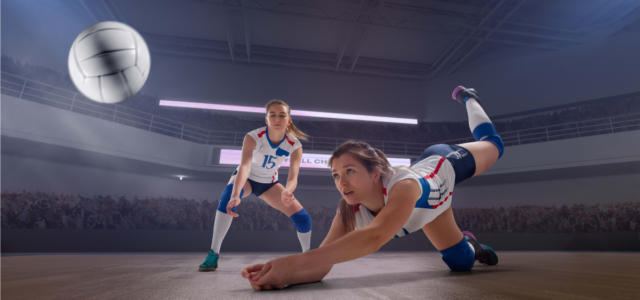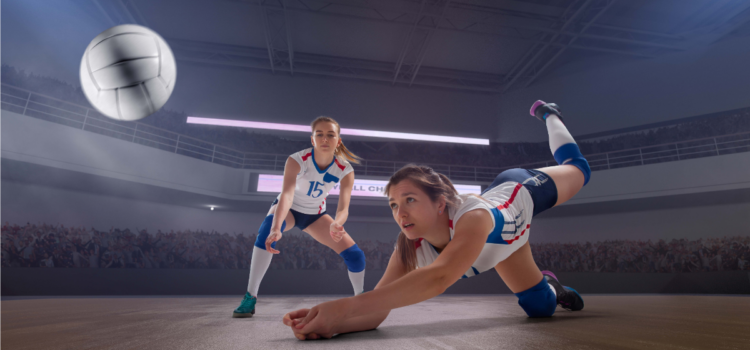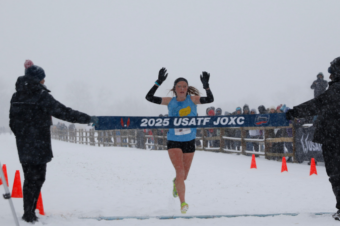

A Guide to Volleyball Positions: Everything You Need To Know To Find Your Role
BlogClub SportsStaffPicksVOLLEYBALL — Served by NCVA October 29, 2024 Lauren Keating 0

Volleyball is a fast-paced sport that requires teamwork, strategy, and skills. Those who are new to sports need to decide what position to take on the court. Each position has its unique responsibilities, different skills required, and playing style.
This guide will help you understand the various volleyball positions and determine which one might be right for you so that you can find your role on the team.
Outside Hitter (Left Side Hitter)
The outside hitter is the foundation of offense. This player is responsible for attacking the ball, receiving serves, and also playing defense. To be great in this position, athletes need a combination of agility, jumping ability, and ball-handling skills.
Ideal for: Players who are versatile and can both attack and defend. If you enjoy being involved in every rally and have good stamina, this could be your position.
Opposite Hitter (Right Side Hitter)
The opposite hitter plays opposite the setter and has a similar role to the outside hitter, focusing on attacking. However, this position includes lots of blocking, especially against the opponent’s outside hitter. This player should have a powerful attack and be a strong blocker. Keep in mind that opposites are often called upon to play in the back row.
Ideal for: Players who are strong at offense and defense and can quickly transition between the two. If you’re comfortable with blocking and enjoy being more solo on the court, consider this position.
Setter
The setter is often referred to as the “quarterback” of the team. This player touches the ball more than anyone else and is responsible for delivering accurate sets to the hitters. A great setter must have quick reflexes, excellent decision-making skills, and the ability to read the game. This position requires a high level of volleyball knowledge and experience, as well as solid communication with teammates.
Ideal for: Players who thrive in a leadership role and enjoy strategizing. If you have a knack for setting up plays and enjoy working closely with teammates, you might find fulfillment in this position.
Middle Blocker
Middle blockers play an important role in defense and offense. This volleyball position focused mostly on blocking the opponent’s attacks. They also play a key part in quick attacks, requiring speed and timing to hit balls set to them. Tall middle blockers have a big advantage when it comes to their vertical jumps. This volleyball position needs to have strong communication skills to coordinate with the setter.
Ideal for: Players who are agile and can react quickly. If you enjoy jumping and blocking while also participating in quick offensive plays, this position could suit you well.
Libero
The libero is a specialized defensive player, distinguished by their different jersey color. They cannot attack the ball above the net and usually play in the back row. Liberos are responsible for receiving serves, digging up attacks, and providing defensive support. They must possess excellent ball control, quick reflexes, and strong passing skills.
Ideal for: Players who excel in defensive strategies and have a strong focus on ball control.
Defensive Specialist (DS)
A defensive specialist is similar to a libero but has more flexibility when it comes to substitutions. DS players come in to strengthen the defense when necessary. While they often focus on passing and digging, they can also serve or substitute for front-row players. Strong communication and a solid understanding of defensive positioning are key traits for this position.
Ideal for: Players who enjoy defensive play and want to contribute without being tied to a specific role. This volleyball position i best for athletes who thrive in high-pressure situations and have a passion for digging and passing.
Conclusion
Finding the right volleyball position depends on the strengths, preferences, and playing style of the player. Reflect on your skills, such as attacking, blocking, or defensive abilities, and consider how you enjoy contributing to the team. With practice and experience, you may find that you can adapt to multiple positions, but starting with a clear understanding of each role will help you excel on the court. Remember, the most important thing is to enjoy the game and contribute to your team’s success.









No comments so far.
Be first to leave comment below.